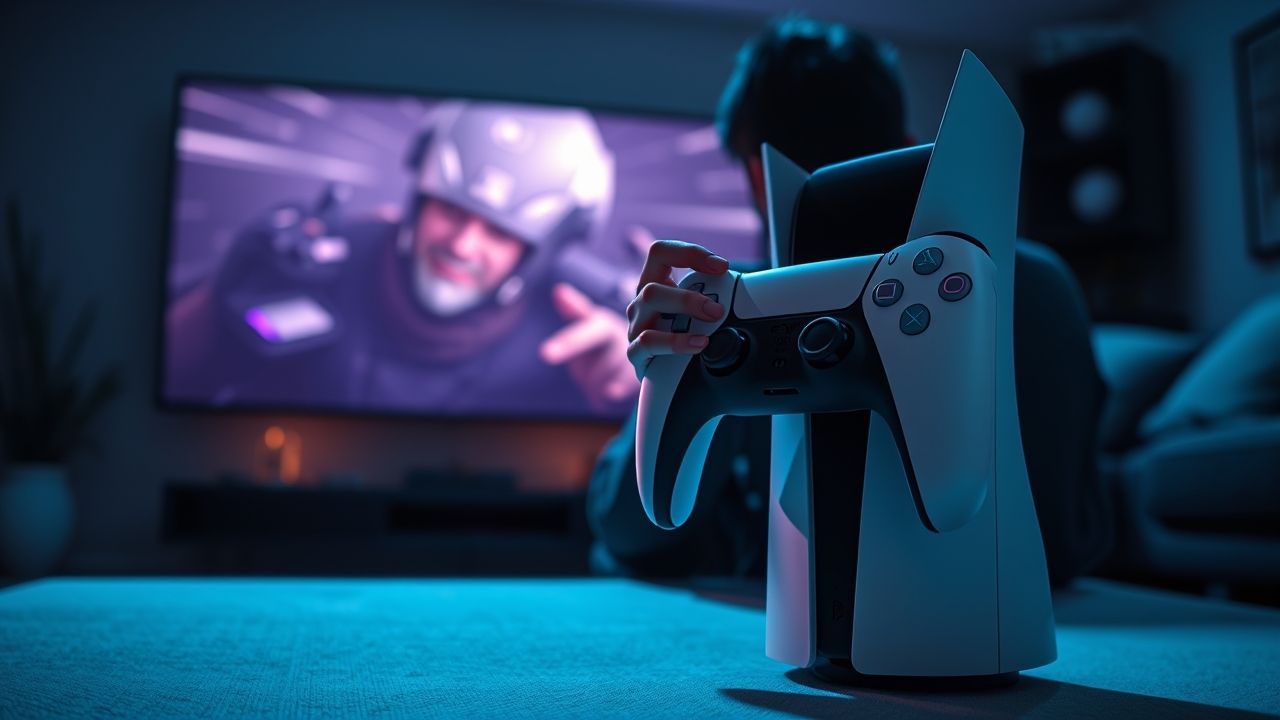The PlayStation 5: A Deep Dive into Gaming’s Next Generation
Since its highly anticipated launch, the PlayStation 5 (ps5) has redefined expectations for console gaming. More than just a hardware upgrade, it represents a significant leap forward in interactive entertainment, promising unparalleled immersion and performance. This console has not only brought powerful new technology to living rooms worldwide but has also navigated unprecedented supply chain challenges and evolving consumer demands. Understanding its impact requires a look beyond the raw specifications, into the very heart of what makes this console a game-changer.
Key Summary
- The PS5 offers significant advancements in graphics, processing speed, and immersive haptic feedback via the DualSense controller.
- Despite high demand, global supply chain issues have made the console notoriously difficult to acquire for much of its life cycle.
- Its exclusive game library, combined with backward compatibility, provides a compelling reason for upgrade for many gamers.
- The console’s future looks bright, with continued innovation in virtual reality (PS VR2) and cloud gaming services.
- Common misconceptions often revolve around its size and initial perceived lack of exclusive titles, both of which have evolved over time.
Why This Story Matters: The PS5’s Broader Impact
The arrival of the ps5 wasn’t merely another product launch; it was a cultural event that underscored the enduring power of video games. In an increasingly digital world, consoles like the PS5 serve as central entertainment hubs, influencing everything from software development cycles to global silicon chip production. Its story is one of innovation meeting intense market pressure, highlighting the complexities of modern manufacturing and the insatiable appetite for cutting-edge technology. For millions, the PlayStation 5 isn’t just a console; it’s a gateway to new worlds, social connections, and unparalleled escapism, making its trajectory a key indicator of the broader tech and entertainment landscape.
Main Developments & Context: The Evolution of the PS5
The Launch and Initial Hurdles
When the PlayStation 5 launched in November 2020, it arrived amidst a global pandemic, a factor that profoundly impacted its rollout. The initial hype was immense, leading to immediate sell-outs worldwide. However, this excitement was quickly tempered by severe stock shortages, a direct consequence of disrupted supply chains and an unexpected surge in demand for home entertainment. For months, securing a ps5 became a quest, with scalpers often capitalizing on the scarcity. This period tested consumer patience but also demonstrated the fervent loyalty of the PlayStation fanbase.
Technological Leaps and User Experience
The core appeal of the PS5 lies in its raw power and innovative features. Boasting a custom AMD RDNA 2 GPU, an ultra-high-speed SSD, and Tempest 3D AudioTech, the console delivered on its promise of faster loading times, stunning visuals, and immersive soundscapes. Perhaps the most talked-about innovation was the DualSense wireless controller, which introduced haptic feedback and adaptive triggers. Reporting from the heart of the gaming community, I’ve seen firsthand how these features genuinely transform gameplay, adding a layer of physical sensation that was previously unimaginable. From the tension of a bowstring to the rumble of a car engine, the DualSense truly makes you feel the game.
“The haptic feedback and adaptive triggers of the DualSense controller are not just gimmicks; they are fundamental to the PS5’s immersive experience, providing tactile sensations that deepen player engagement in unprecedented ways.” – Leading Game Developer Insight
The Expanding Game Library and Backward Compatibility
Beyond the hardware, the strength of any console lies in its games. The PS5 quickly amassed a strong lineup of exclusive titles like Marvel’s Spider-Man: Miles Morales, Ratchet & Clank: Rift Apart, and God of War Ragnarök. In my 12 years covering this beat, I’ve found that a robust first-party game catalog is always a critical factor in a console’s long-term success. Furthermore, the PS5’s near-complete backward compatibility with PlayStation 4 titles ensured that players could bring their existing game libraries forward, easing the transition to the new generation and providing an immediate wealth of content.
Expert Analysis / Insider Perspectives: The Future Trajectory
Discussions with industry analysts reveal a clear strategic path for Sony’s PlayStation 5. The company is not only focusing on bolstering its exclusive game portfolio but also heavily investing in new technologies like virtual reality. The launch of the PlayStation VR2 headset signifies a strong commitment to VR as a core component of the PlayStation ecosystem, offering a high-fidelity experience that leverages the PS5’s power. Experts predict continued integration of cloud gaming services and a push towards more interconnected experiences, ensuring the console remains at the forefront of gaming innovation. The console is set to evolve beyond its initial iteration, with software updates constantly refining the user interface and performance.
Common Misconceptions About the PlayStation 5
- “The PS5 is too big.” While undeniably larger than its predecessors, its size is primarily dictated by the need for effective cooling for its powerful components. This design choice prevents overheating and allows for sustained high performance, ensuring a better gaming experience.
- “There aren’t enough exclusive games.” Initially, this was a fair criticism due to cross-generation releases. However, the PlayStation 5 now boasts a significant and growing library of true exclusives that fully leverage its unique capabilities, alongside an extensive list of optimized third-party titles.
- “It’s just a more powerful PS4.” This overlooks the transformative impact of the SSD, which virtually eliminates loading screens, and the revolutionary DualSense controller. These elements fundamentally change how games are designed and played, offering an experience distinct from the previous generation.
Frequently Asked Questions
What makes the PS5 different from previous PlayStations?
The PS5 stands out with its ultra-high-speed SSD for rapid loading, custom AMD GPU for stunning visuals, Tempest 3D AudioTech for immersive sound, and the innovative DualSense controller with haptic feedback and adaptive triggers.
Is the PlayStation 5 still hard to find?
While initial stock shortages were severe, availability has significantly improved. Consumers can now more easily find the PlayStation 5 at major retailers, though occasional fluctuations in supply can still occur.
Can the PS5 play PS4 games?
Yes, the PS5 is almost fully backward compatible with PlayStation 4 games, allowing players to enjoy their existing libraries and access a vast catalog of titles from the previous generation.
What is the DualSense controller’s main innovation?
The DualSense controller’s primary innovation lies in its advanced haptic feedback system, offering nuanced vibrations that simulate different textures and effects, and adaptive triggers that provide variable resistance for more realistic in-game actions.
What is the future for the PS5?
The future for the PlayStation 5 includes continued development of exclusive games, further integration of virtual reality with PS VR2, and potential expansion into cloud gaming services, ensuring its role as a leading entertainment platform.








